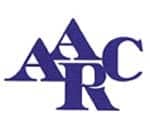A new study found that six carbonyl compounds in exhaled breath may distinguish between lung cancer patients and healthy controls, which may be used to detect malignancy.
Previous methods used to try and detect these compounds in breath have been limited in various ways; the new study focused on a novel method utilizing “quaternary aminooxy-coated silicon microreactors” to identify and quantify specific volatile compounds in exhaled breath. The method was tested in 85 patients with untreated lung cancer, 34 patients with benign pulmonary nodules, and 85 healthy controls divided by smoking status. Results were published online ahead of print in Lung Cancer.
They found that six specific carbonyl compounds had elevated concentrations in the breath of lung cancer patients compared to healthy controls. These included: 2-butanone; a mixture of 2-pentanone and pentanal; hydroxyacetaldehyde; 3-hydroxy-2-butanone; 4-hydroxy-2-hexenal; and 4-hydroxy-2-nonenal.
The researchers created model based on counting the number of elevated compounds out of these six. It had a classification accuracy for finding lung cancer patients vs non-smoker controls of 97%. The accuracy was 95% for lung cancer patients vs current smoker controls, and 89% for lung cancer patients vs patients with benign pulmonary nodules.










